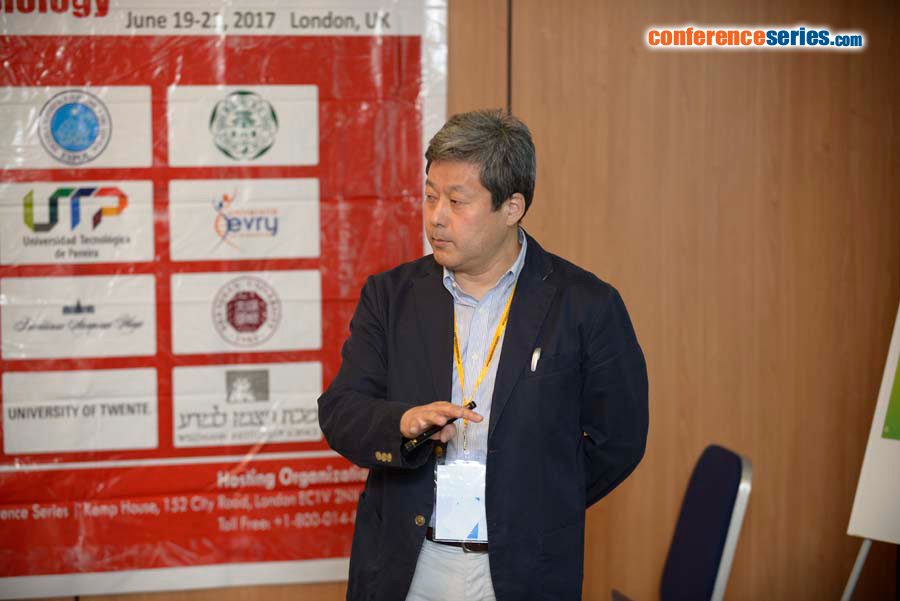
Sakae Tsuda
National Institute of Advanced Science and Technology, Japan
Title: A new type I antifreeze protein BpAFP undergoes oligomerization to bind to whole surface of an ice crystal
Biography
Biography: Sakae Tsuda
Abstract
The general ice crystal is a polycrystalline state composed of numerous single ice nuclei, which undergo crystal growth and are combined together to form a larger ice block below 0°C. Antifreeze protein (AFP) has an ability to bind to a set of waters constructing an ice surface, and disturbs formation of the polycrystalline ice, since the AFP-adsorbed ice surfaces are inhibited their growth and integration. A hyperactive species of AFP that can bind to any set of the waters of the ice is extremely powerful in such function, compared with general AFPs that only bind to specific ice surfaces. Here, we discovered a new 40-residue antifreeze protein (AFP) from a right eye flounder barfin plaice (BpAFP), which uniquely showed two manners of ice binding at different concentrations. The BpAFP bound to prism and pyramidal surfaces of an ice crystal to shape it into hexagonal trapezohedron at the concentrations below 0.01 mg/mL, while underwent further binding to whole ice crystal surface including the basal planes at the concentrations above 0.01 mg/mL. In the latter, the ice crystal became smaller and lost their facets in keeping with the concentration, and finally changed into a tiny lemon-shaped morphology, as similarly observed for the known hyperactive AFPs. The basal plane binding further caused the bursting ice crystal growth normal to the c-axis, for which it detected 3.2°C of high thermal hysteresis activity. The BpAFP is an alanine-richest isoform of type I AFP composed of three tandem repeats of the 11-residue consensus sequence TX10 (where X is mostly alanine), which presumably constructs the monomeric ï¡-helical structure so as to encompass an extremely continuous alanine-assembled surface. These remarkable properties distinguish BpAFP from all the known macromolecules, thereby offering an epoch to advance our understanding of ice-protein interaction.





